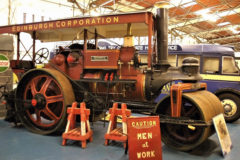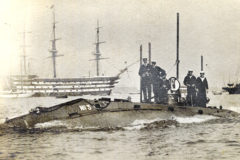1952 Bedford ‘O’ Series
Posted by Chris Graham on 10th February 2022
The latest addition to Drew Laburn’s classic commercial vehicle collection is a 1952 Bedford ‘O’ Series, as Bob Weir explains.
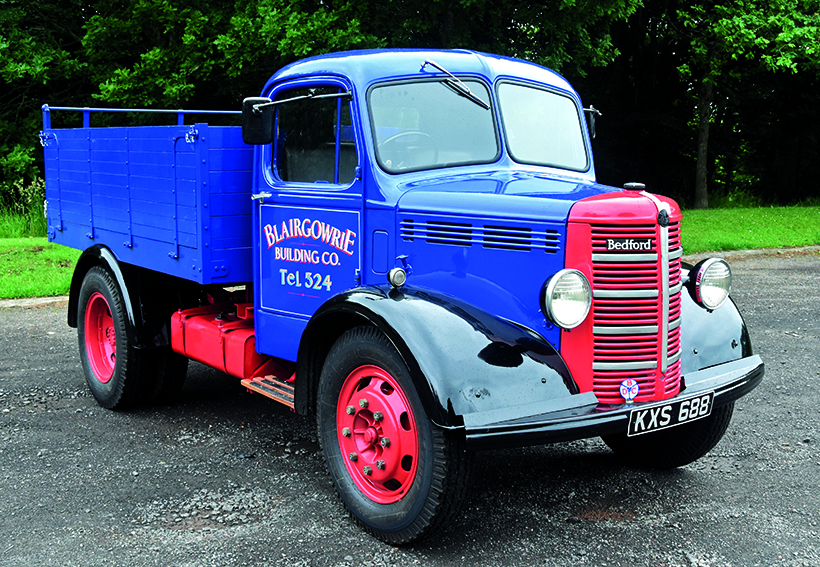
1952 Bedford ‘O’ Series: Drew’s tipper is one of the last of the O-Series to be made before they were phased out in 1953.
The market town of Blairgowrie is located in the Strathmore Valley, one of the most picturesque areas in Scotland. The region has a well-deserved reputation for its agriculture, in particular soft fruit. It is also home to the Scottish Transport Extravaganza that is held every July at historic Glamis castle, former home of the late Queen Mother.
Drew is a retired building contractor to trade and has lived in the area all his life. “I remember the first lorry I sat in was my father’s ageing Fordson 7V tipper,” he recalls. “It must have fired my imagination because I have been interested in old trucks ever since. The first vehicle I actually owned was a 1926 one-ton Morris commercial, which I bought jointly with a friend in 1968 when I was still a teenager.”
Having spent several weeks restoring the Morris back to health, Drew became interested in other commercials, particularly lorries he could associate with his childhood days. In addition to the Bedford he also owns an Albion FT35 Clansman tipper. “I first spotted the Albion at the Scottish Transport Extravaganza back in the early 1970s,” he said. “I took a fancy to the lorry and made a note of the owner’s name and address. Turned out he lived in the nearby village of Friockheim.”
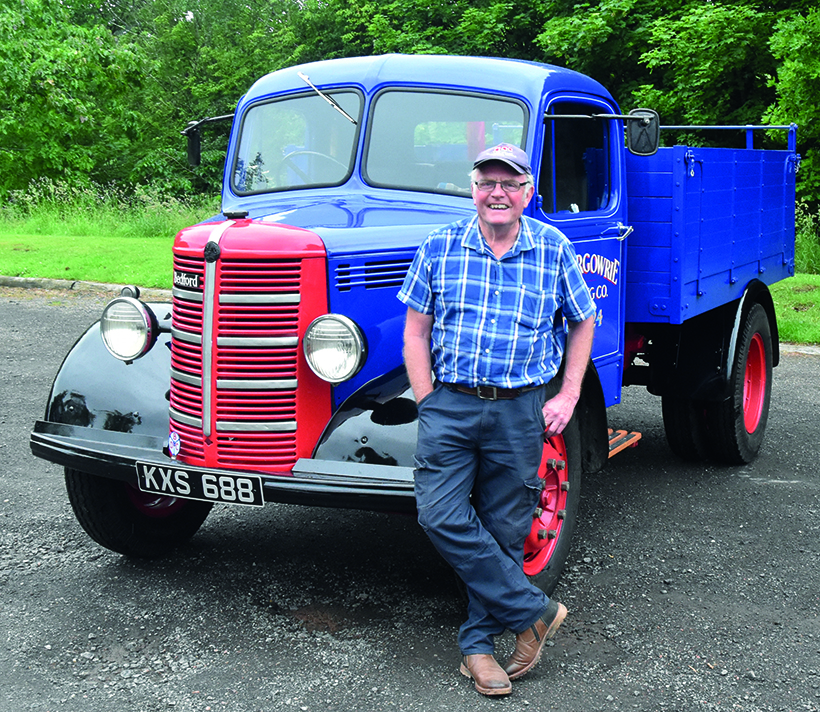
Drew Laburn has been fond of old commercials all his life.
By this time, Drew was busy raising a family and was also heavily involved in running his business. The memory of the Clansman was put on hold until the early 1990s, when he stumbled across the lorry again almost by accident. “I was taking my mother out for a Sunday drive, and just by chance we ended up passing through Friockheim,” he recalls. “The name jogged my memory, and I suddenly thought of the Clansman.”
Just as he was leaving the village, Drew happened to see an elderly gentleman by the side of the road. On the spur of the moment he stopped the car and asked him if he knew the whereabouts of the lorry. “Imagine my surprise, when the chap turned out to be Mr Wilkie the actual owner!” he said. “After a bit of persuasion he agreed to take me back to his place to see the lorry, which was hidden away at the back of a shed. I was determined to get some photographs, and he said he would phone me once he had got the Albion up and running. I eventually ended up buying the lorry and used to take it regularly on road runs all over Scotland and the North-east of England.”
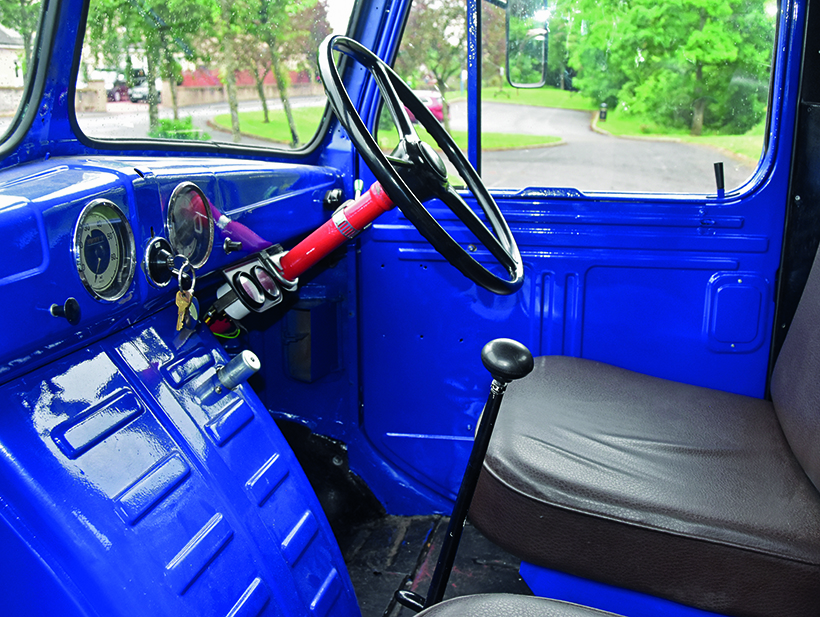
The O-Series cab was typical of its era: workmanlike and no frills.
The Clansman (serial no: 72911B) was first registered in Edinburgh in June 1950 to the Scottish Hydro Electric Company. “The lorry was sent to Kinloch Rannoch in the Highlands,” Drew explained. “Apparently, it was driven by the same man throughout its career. The lorry’s coachwork was made by Kirkness and Innes at their workshop in Dalkeith, Midlothian, and the company is still trading today.”
Once the Albion had completed its working stint with Scottish Hydro, the lorry was sent to auction and sold to Mr Wilkie who was looking for a commercial vehicle to take part in rallies. By the time Drew came across the Clansman for the second time, the tipper was a little the worse for wear and suffering from a few niggles.
“The tipping ram was leaking oil, and the brakes weren’t working properly,” he recalls. “I suggested that Mr Wilkie might like to show the lorry at that year’s Glamis Extravaganza, and that was when he dropped his bombshell. Apparently, his son had no interest to taking over responsibility for the vehicle, and he had decided to sell it to me instead.”
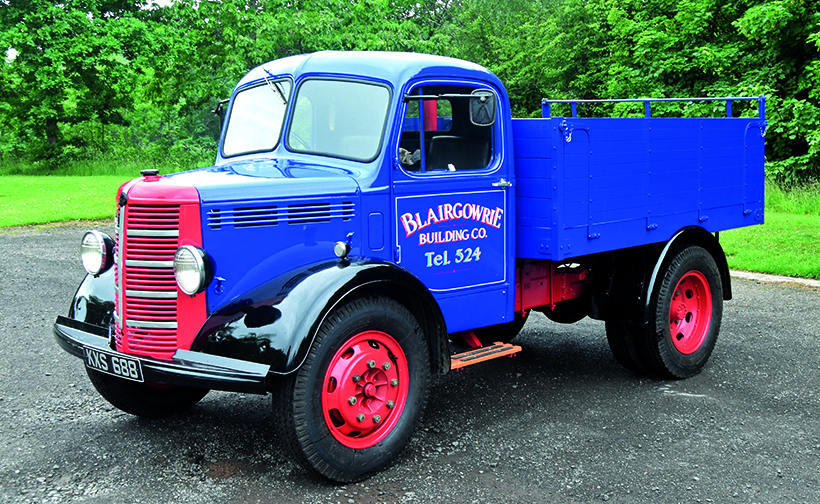
Unlike a lot of veteran Bedford lorries that have had their bodies changed over the years, Drew’s lorry was a tipper from new.
Drew was understandably over the moon, and quickly came to an arrangement. “Mr Wilkie agreed to fix both the rams and brakes, and in return I sold my old Morris commercial that I still owned to help finance the deal,” he said. “Twenty years after I had first clapped eyes on the Clansman, I found myself the third owner of HSF 511.”
Having brought the Albion home to Blairgowrie, Drew gave the lorry a closer inspection. Although the Clansman was still pretty much in its original condition, the lorry only needed a quick makeover and new coat of paint. Drew started taking HSF 511 to shows, and it soon became a regular on the Ulster, Tyne Tees, and North East road runs.
“A few years back I also owned a Bedford Model S, which was another trip down memory lane,” Drew recalls. “I originally had a Dinky model of the Bedford when I was a lad. One of my father’s competitors also used a Model S, which seemed bigger and grander in comparison to our family’s Austin Lodestar.”
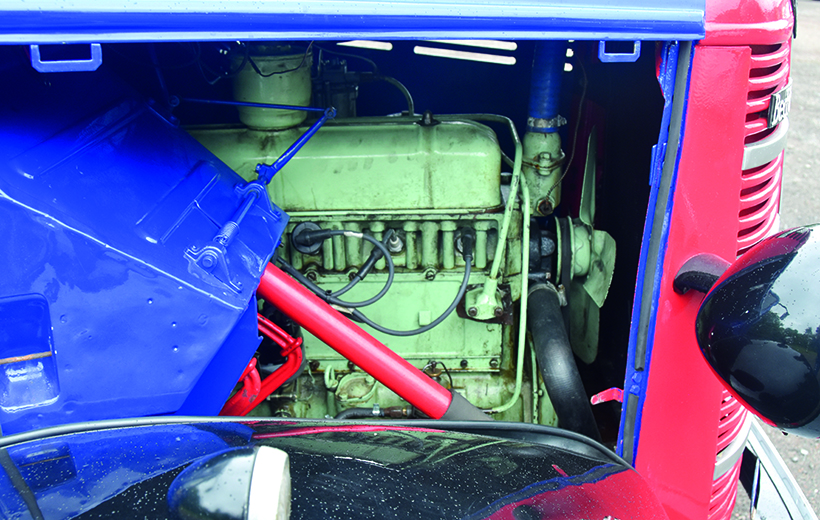
What is believed to be the original engine has been completely restored, and is a willing performer.
Drew bided his time before acquiring a 1952 example that had previously seen service as an Auxiliary Fire Service Vehicle (AFS). These had been used in the 1950s and 1960s, to back up the legendary 4WD Bedford Green Goddess. “I went down to Nottingham to complete the purchase and drove the lorry back to Scotland the same day,” he recalls. “It was a long journey and seemed to take forever, but it was worth it. NYV 638 was great fun to drive but the petrol engine was very thirsty, so I ended up replacing it with a Bedford 330 diesel. I also changed the differential for a higher ratio unit taken out of a Bedford bus. I ended up using the lorry on the majority of my road runs, and the Clansman was only brought out on special occasions.”
Despite the fact he liked NYV 638, Drew ended up swapping the lorry for a Bedford model ‘O’. “I took the Model S down to the Great Dorset Steam Fair in 2012 and got talking to the owner of a Bedford ‘O’,” he said. “I wasn’t really looking to part with NYV 638, but the Dorset show has a great atmosphere and sometimes you can end up making some strange decisions!
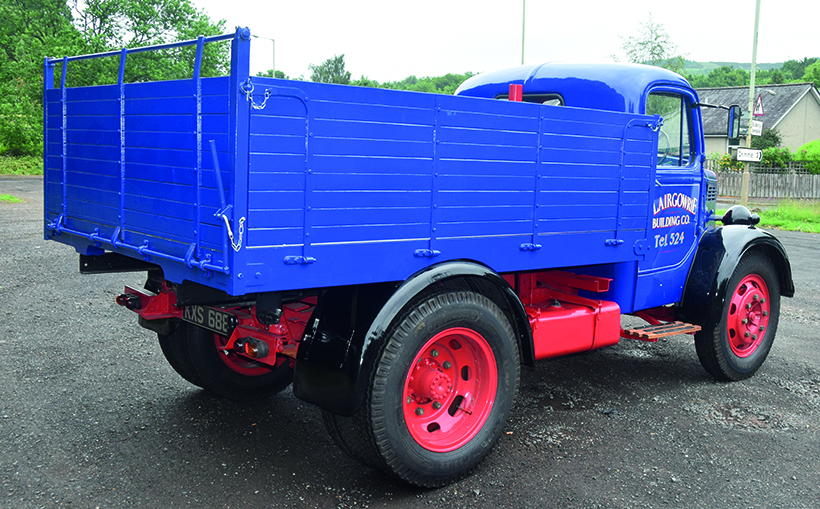
Drew likes to take his lorries out for a spin, and the Bedford ‘O’ has become a familiar sight in the Blairgowrie area.
“The owner mentioned that the lorry was technically a model OYD. This was the general service three-tonner, used by the British army during the Second World War. The vehicle was built in 1940, and would have originally been equipped with a flat, front end and single rear tyres.”
But as Drew found out, sometime in the past the lorry had undergone several modifications. “The owner told me that after the lorry had been de-mobbed from the army in 1952, it was bought by a farmer and converted into a tipper,” he said. “This was quite common when ex-military vehicles were sold into private hands. The exact circumstances remain a bit of a grey area, but what is certain is that the chassis was cut down by 24 inches. An OB bonnet and grille similar to the type used by the post-war coach versions, was also grafted onto the front.
“It remains a mystery why the previous owners went to such lengths to alter the vehicle. When all’s said and done, the Bedford was now a complete mongrel of a lorry, but it still had some of its original equipment including the four-speed crash gearbox. Anyway, I’ve always been a big fan of the O-Series, so decided to overlook these issues.”
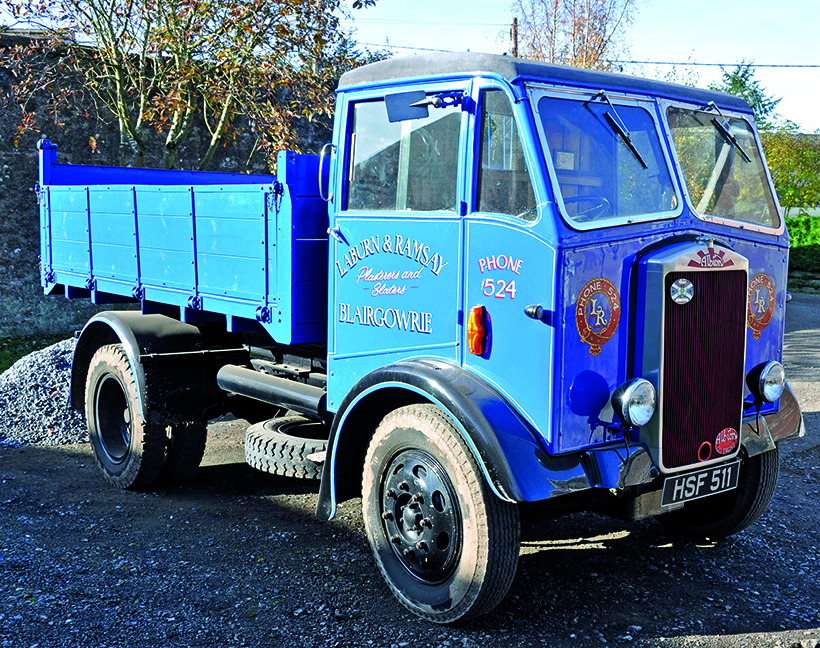
Drew still owns the Albion Clansman he first spotted in the early 1970s, although these days the lorry spends most of its time stored out of the weather.
Having concluded the deal, Drew and owner came to an arrangement for a haulage company to bring the ‘O’ up to Scotland and deliver the ‘S’ back down south. But when his latest Bedford finally arrived in Blairgowrie, he quickly discovered a few problems.
“For starters, the brakes were in such poor condition they were almost non-existent,” he recalls. “The steering and electrical wiring also had to be completely renewed. The rest of the mechanical parts were fairly sound, but the vehicle needed a fair bit of tidying up. Because I was led to believe the ‘O’ was still using its original engine the top speed was only 40mph, which would have been fairly typical for the period.
“Fortunately because there are not many motorways in the Tayside area, this was not really an issue. The Bedford was also perfectly capable of climbing up hills, at a reasonable pace. I used to take the lorry on several road runs each year, without any problems.”
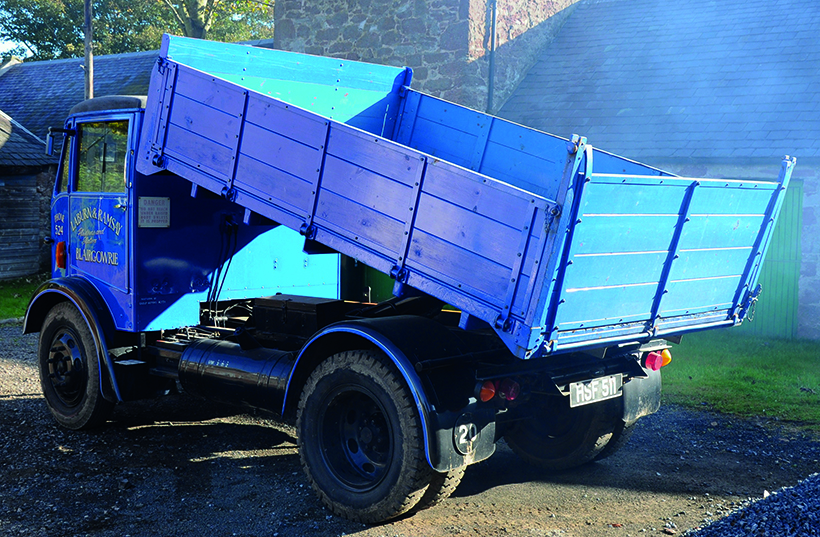
The tipping mechanism was repaired as part of the arrangement with the previous owner and is still in working condition.
Drew eventually decided to sell the model ‘O’ in 2015 after a chance encounter with an enthusiast at the Morris Leslie Classic Auctions based at Errol airfield in Tayside. “I used to go along for the Friday preview the day before the auction,” he explained. “One of the lots in the catalogue was an old Morris Commercial. I spoke to this enthusiast who had travelled all the way down from the Isle of Sky, specifically to bid for the Morris. He had even arranged somewhere to stay for the whole weekend.
“Unfortunately, the Morris turned out to need more restoration work than he had bargained for, and he was very disappointed. We got chatting, and I told him about my Albion and the Bedford ‘O’. The enthusiast was reluctant to go back home empty handed, so I agreed to show him the lorries on the Sunday after the auction. I did not want to part with the Albion, but we came to an arrangement with the ‘O’. The enthusiast agreed to arrange shipment back to the Isle of Sky.”

KSX 688 arrives in Blairgowrie.
Although Drew was technically reduced to one lorry, he still had an ace up his sleeve. “I had this old Bedford TK, which was in several bits and pieces,” he said. “The lorry had been sitting in the back of my shed for years, and I finally decided to restore it. “The Bedford TK had originally been new to the Bank of Scotland and was used as a mobile display unit to tow a hospitality trailer to various shows. The 1979 model was equipped with the powerful Bedford 500 turbo diesel engine also known as the 8.2 ‘Blue’, a five-speed overdrive gearbox, and two-speed axle.
“The lorry was also fitted with a Scammell coupling, but try as I might I could not find a suitable trailer. I ended up putting a fifth wheel on the lorry and buying a second-hand trailer from an enthusiast down in Gloucester. I used the lorry on road runs for a couple of years, before moving the vehicle on to an enthusiast in Wigan.”
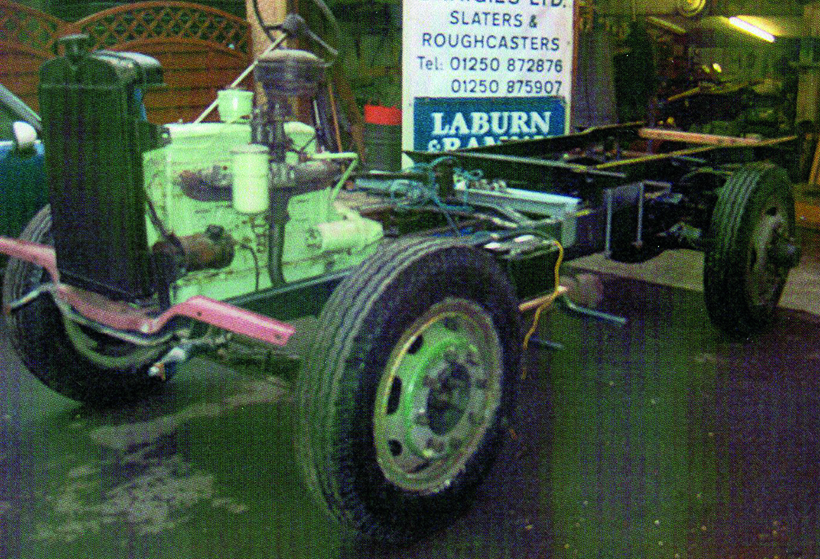
The chassis before restoration.
Now Drew had some funds available from the sale of the TK, he decided to look for another Bedford O. “I had missed driving FJT 364, so started looking on eBay,” he said. “I was particularly after a short-wheel-base tipper version, as this model was always my favourite.”
Fortunately, Drew did not have long to wait, and spotted a lorry for sale in Brentwood, Essex. “I don’t like buying old vehicles ‘unseen’, so in 2017, I flew down to Stanstead and hired a car,” he explained. “The 1952 lorry’s condition was a bit rougher than I expected, but at least the chassis had been shot-blasted and primed. The lorry was a genuine model OSBT, or short-wheel-base tipper, from new. I confirmed the price with owner Bill Ruston and arranged for the Bedford to be delivered up to Scotland.
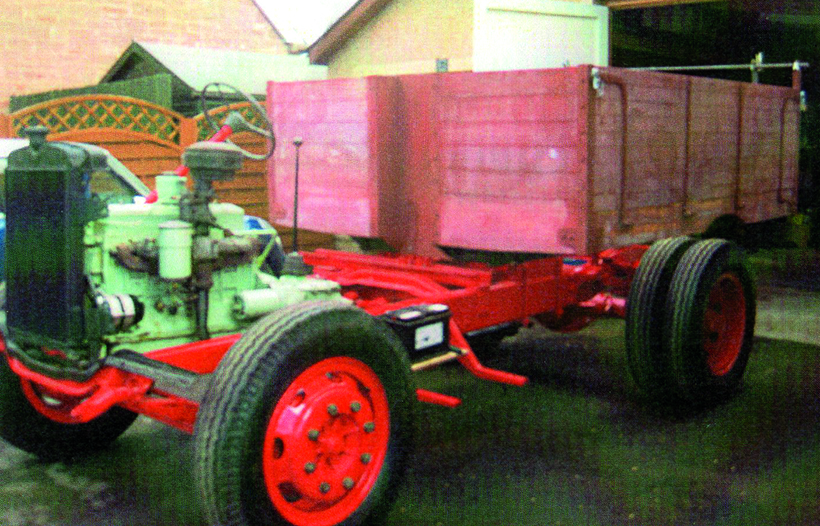
The tipper is refitted as the restoration nears completion.
“I believe the lorry was originally registered 109 ACA and was new to a company called AE Hampson Roofing Contractors based in Wrexham. The lorry was then acquired by local enthusiast Graham Turner. Graham passed away shortly afterwards, and his collection of machinery was inherited by his brother Desmond Turner who ran a local garage. When he also passed away in 1983, the lorry was sold in an estate dispersal auction.”
109 ACA was missing its tipping body, and when Drew started the engine there were ominous puffs of black smoke. “The standard 28hp engine obviously needed an overhaul, but that wasn’t a problem as I do most of the restoration work myself,” said Drew, who is a member of the Strathmore Vintage Vehicle Club. “My friend Barry Stalker is a retired coachbuilder, and he did the welding. I reckon the work probably took me the best part of a year.
“I acquired the necessary spare parts from Bygone Bedford Bits down in Poole, Dorset. I also managed to get hold of a factory manual, so was able to hand-build the tipper to the exact measurements. This was time consuming work, but worth it in the end.”
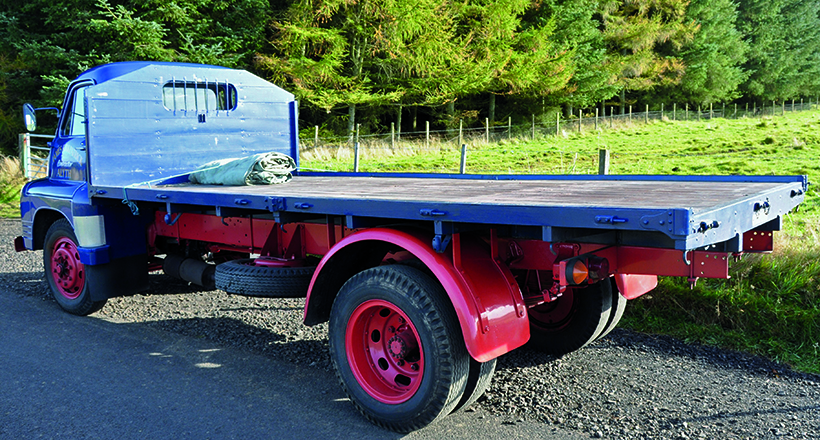
At some point in its life the lorry was converted into a flatbed.
Drew also recalls he had an issue with the Bedford’s registration. “The lorry had come with the number plate 109 ACA, but there was no official documentation,” he explained. “I knew the local Strathmore Vintage Vehicle Club had an arrangement with the DVLA in Swansea, so I ended up becoming a member. They did all the necessary paperwork, and the lorry is now wearing the age-related plate KXS 688.
“The Bedford is great to drive but like a lot of lorries from that generation, it struggles on the motorway. That said, now I am getting older I am unlikely to take the lorry long distances. It would be nice to replace the rear differential to increase the ‘O’s top speed, and I’m currently keeping my eyes open for a suitable spare part.
For a money-saving subscription to Heritage Commercials magazine, simple click HERE



